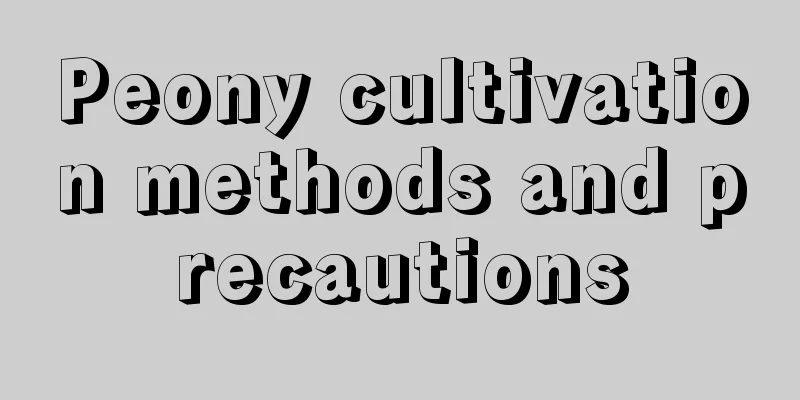Cultivation methods and precautions of bicolor jasmine

|
Jasmine bicolor is a plant that can be grown in the ground or in pots in southern China. In the Yangtze River Basin and areas north of it, it is usually planted in pots because it needs to be brought indoors in winter. Let’s learn about the cultivation methods and precautions of bicolor jasmine . 1. Pot soil selection Choose a pot with a diameter of 10cm to 50cm according to the size of the plant, preferably a clay pot to ensure good permeability. Avoid using clay soil to prevent root rot. Use a mixture of leaf mold, garden soil and sand in a ratio of 5:3:2 to keep the soil loose, fertile and slightly acidic. Repot and change the soil every 1 to 2 years in early spring, retaining some of the old soil. 2. Water and fertilizer management Bicolor jasmine likes moisture but is afraid of waterlogging. It needs to be sprayed and watered frequently during its vigorous growth period from April to September to keep the soil in the pot moist but not waterlogged. Reduce watering from October and keep the soil in the pot slightly dry in winter. Apply nitrogen, phosphorus and potassium compound fertilizer every 10 to 15 days during the growing season to avoid applying nitrogen fertilizer alone which will cause excessive growth of branches and leaves. Apply phosphorus and potassium fertilizers before winter, and suspend fertilization from winter to February of the following spring. 3. Temperature and light Bicolor jasmine likes plenty of sunlight and warm and humid climate. The suitable growth temperature is 15℃ to 32℃. During the growing period, it should be placed in a sunny place. Long light hours will help the plant to be strong and the flowers to bloom luxuriantly. Provide appropriate shade at noon in midsummer and move it indoors when the temperature drops below 5℃ in winter. 4. Pruning and shaping The bicolor jasmine cultivated at home should not be over-pruned, and a round crown of 30cm to 40cm high should be maintained. In early spring, heavy pruning should be carried out in conjunction with repotting and changing the soil. After flowering, the remaining flowers should be cut off in time, and the overgrown branches and inner branches should be removed. 5. Reproduction method It is mainly propagated by pole cuttings and high pressure, combined with pruning in spring and autumn. Choose strong branches, dip them in rooting powder or VB12, and insert them into plain sandy soil, maintaining high humidity and appropriate temperature. For high-pressure propagation, choose two-year-old strong branches, peel the bark in a ring, cover the wound with moss and leaf mold, and keep it moist until roots take root. The above are the key points for potted cultivation of bicolor jasmine. There are many varieties of jasmine, and bicolor jasmine is more popular now. Have you ever raised it?
|
<<: Goose breeding technology and management
>>: Silkworm breeding methods and precautions
Recommend
How to grow colorful peppers to make the fruits more colorful
How to grow five-color peppers to make the fruits...
How to care for mint in winter?
Maintenance tips for the beginning of winter From...
How to repot a rubber tree
1. First, we need to take it out of the original ...
Can fig pruning survive? Time and method of branch cuttings
Can fig cuttings survive by grafting? Fig cutting...
When do mimosa seeds mature? When is the best month to sow mimosa?
1. Maturity Time The flowering period of mimosa i...
The sowing and propagation method of Michelia sempervivum
Soil selection Michelia sempervivum is a shallow-...
Which part of Phalaenopsis should be watered?
1. Which part to water Its plant has very distinc...
These 15 kinds of succulents are so beautiful when they bloom! You will regret it for the rest of your life if you don’t take a look!
Alba Alba flowers grow in clusters, with red and ...
Should I water the winter jasmine thoroughly? Is it best to water it every few days?
Is the winter jasmine watered thoroughly? Forsyth...
Mimosa planting method, the role of mimosa
1. Mimosa planting method 1. Soil: It does not ha...
Transplantation method of lucky bamboo buds
1. How to promote the growth of side shoots Remov...
Can old root sunflowers be propagated by cuttings (how to propagate sunflowers by cuttings so that they grow well and bloom more)
Old root sunflowers generally refer to the perenn...
Can daffodils be placed indoors? How to grow them at home?
1. Can I put it at home? Daffodils can be grown a...
How long does it take for Chlorophytum to adapt to the pot?
Chlorophytum acclimatization time The length of t...
Peach Blossom Pest Control Encyclopedia
How to prevent peach aphids Aphid damage The main...









